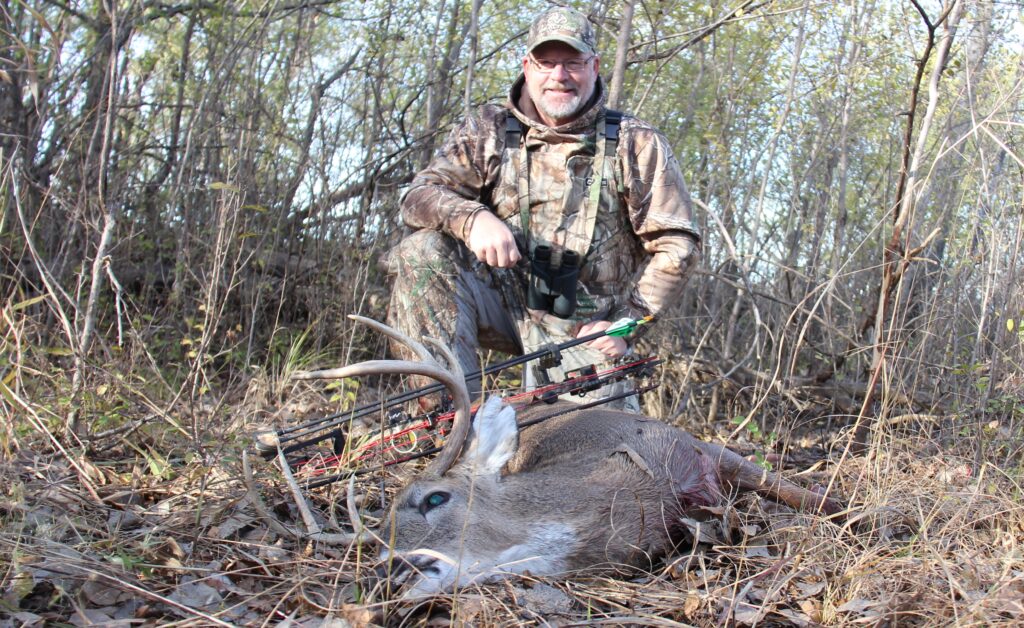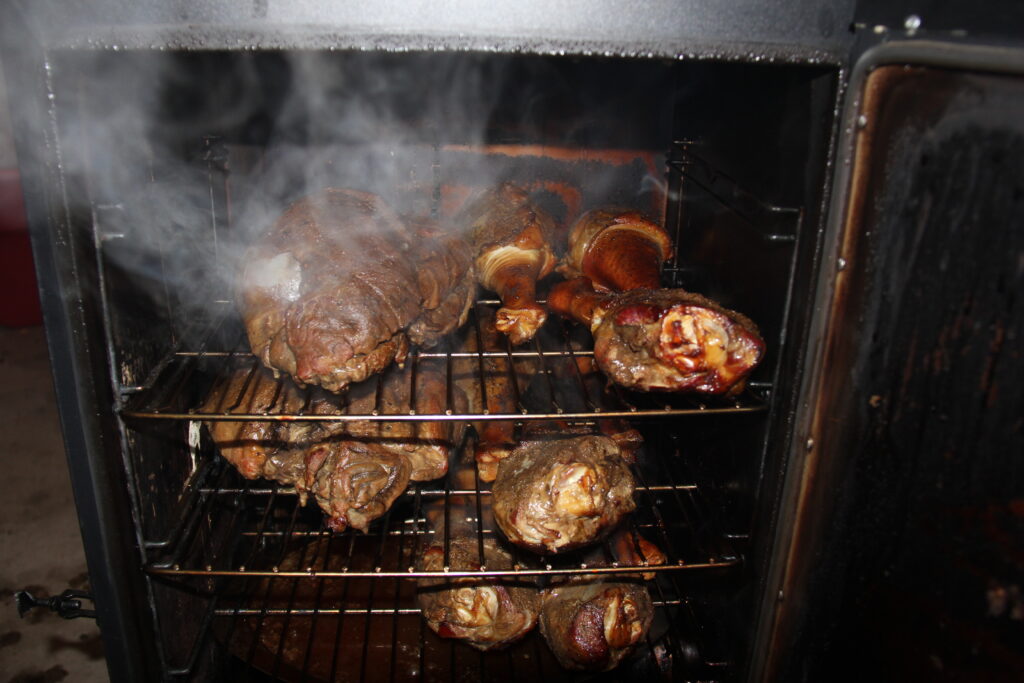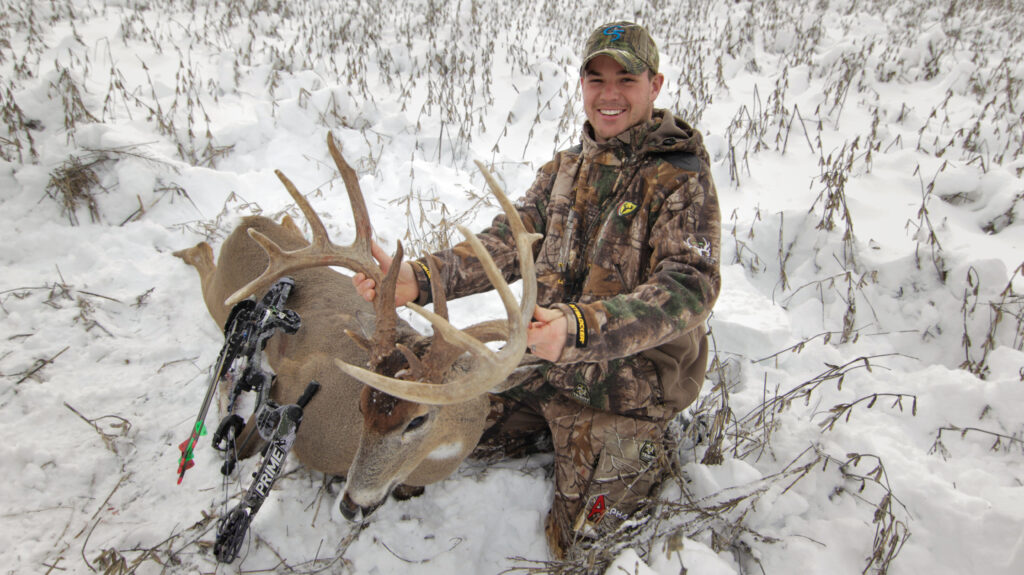Plan Your Next Successful Hunt Right Now

By Bernie Barringer I’d been sitting in a tree by a trail that led to a bedding area composed of willows on a riverbank. A steep hill was 100 yards to the west and I was surrounded by rubs and scrapes. I had spent two mornings and an evening in this spot, with a great deal of confidence. It looked good and felt good. The morning before, I watched a string of six does and a yearling buck walk a trail 60 yards to the west. I had considered that trail for my stand, but frankly, the one I was sitting in just looked a lot better. Over the next two sits, I continued to see deer using that other trail. I also had the frustration of watching a nice 10-point buck work a scrape just out of range. I decided to move my stand 60 yards so I could cover that trail. I didn’t fully understand why, but for some reason that’s where the most activity seemed to be. By all outward appearances, the place I was sitting should have been the right spot, but I moved anyway. The following morning, and hour after daylight, I could hear two bucks fighting down by the river. They were in the bedding area, and if I had been in the stand I had abandoned the previous day, I would have been able to see them. I silently cursed my luck for moving. But my disappointment would be short-lived. Suddenly, a 3-year-old eight pointer came running up the bank and raced by my stand. It was followed by a heavy-bodied buck with dark fur, thick shoulders and a big gray head. A buck much older than you would expect to see on public land. He crossed the trail at a right angle then stopped at 40 yards perfectly broadside, looking momentarily for the younger buck he had just vanquished. My arrow sliced through both lungs before I could hardly even fully grasp the situation or think about the shot. It happened so fast and I was in automatic mode. I’d been hunting three different public properties in that area for 12 days, and that subtle move of the treestand made the difference. I had drawn a tag for that state, researched the public land opportunities, chosen a small number of places to look at, finally settled on three of them, and eventually, picked the exact right tree. That’s what being a successful freelance bowhunter is all about. The positive outcome of that hunt was the result of a doing lot of homework. I’d spent a lot of time the previous winter doing research on this piece of public land, which included talking a local hunter who gave me a lot of good information, reading what I could on the state DNR’s website, speaking to a biologist and game warden on the phone and gazing at aerial photos on Google Earth. Choosing a Hunting Location This is the one component of the puzzle where the decision is made before you ever leave home, and winter is the time to do it. You first have to decide where you want to go. Some states offer tags over the counter, some require you to apply and choose a zone, and yet others require you to apply for several years before you will draw. Make a list of the states you would like to someday hunt and start applying for tags or preference points. You will need to understand the terms relating to tags and drawings and this article offers of ton of info. For the sake of argument, let’s say you have drawn a tag or want to hunt an OTC state. The first thing you should do is start with internet research. There is a lot of information on this site that will help you make decisions about the public areas too. Spend some time researching public areas on the state game departments’ websites. Large national forums such as Archery Talk, Bowhunting.com, Bowsite.com and others offer a large pool of people who can offer up good answers to specific questions. State Hunting Forums It seems there are hunting forums for each and every state. Some of them are very active and others not so much. Find the ones for each of the states you have an interest in and then start visiting them. Sometimes the locals can be a little harsh when you start asking for information, but if you establish a relationship, you can often find some good info and there always seems to be a couple guys with knowledge and a helpful attitude. Avoid asking general questions such as, “I have an Iowa tag, which public hunting areas are good?” All that will do is make people think you are trying to use them to do the research that you should be doing yourself. A much better question would be “Has anyone hunted the Shimek State Forest… can you tell me how much bowhunting pressure to expect there the first two weeks of November?” That question will probably get a helpful response. State Wildlife Agencies and Aerial Photos Of course, it is important to spend time on the state DNR website and learn about the public hunting areas. Most states have maps of their public areas. It seems to work best for me to compare these maps with Google Earth aerial photos. I like to look at the borders of the areas to see what the property lines look like. What does the land on the other side of the property line look like? Is it open farm ground or maybe urban area? I have hunted a couple pieces of public land that had some really well managed private land adjacent to it. On Google Earth you will see what to look for: Food plots, clearings, streams, sometimes even shooting houses or treestands. Once you have seen a well-managed deer sanctuary on Google Earth, you will begin to recognize what to
How to smoke a venison ham

This not just another venison recipe, it’s a new way to look at cooking an entire hindquarter of venison. Check it out. By Bernie Barringer My wife shot a young doe and the tender meat had me looking for something new to try with the venison. A trophy is in the eye of the beholder and this deer was a trophy for the two of us, but it left me with some decisions to make. We eat a lot of wild game at our house, in fact, our five kids grew up on it. I am always trying something new and experimenting because to me that’s part of the thrill of the harvest. I usually make the hindquarters of deer into roast to be cooked in the slow-cooker. They are mouthwatering and tasty the way I make them. The hindquarters of a young deer like this one are tender and I often make them into steaks, because half of them are too small for a roast and the entire “ham” makes a mighty big roast. Six pounds of roast is more than we need at this point in our life. So I decided to try something new this time; smoke the entire ham. I would have to experiment with the amount of heat and time since I had never done this before. I also like to have the smoker full when I use it; since I wasn’t making any sausage out of this deer I got a dozen turkey legs (they are cheap and make a good lunch for me) and added them to the mix.d What I did was not a true ham. To make your venison into a true ham you would need to cure it for hours in a brine with salt, spices, pickling spices, etc. which is a lot more time and work than I wanted to go into with this experiment. That process may be next on my list, and if you want to go that route there are plenty of online resources for curing a ham. I coated the hams with salt and seasoning salt. I tend to use Lawry’s Seasoned Salt on most kinds of beef and venison when I am grilling, but when I am cooking pork I really prefer Johnny’s Seasoning Salt. I decided to use the Johnny’s with this project. As you can see by the video I was very generous with the salt and seasoning. Coat the meat really good inside and out. If you have a meat injector, use it! I started the smoker at 155 degrees because I felt that’s the internal temperature I would want for the ham to be done. Because it was so cold in my unheated garage, it would have taken probably 12 hours to finish it at that temperature, and since I was planning to have it for supper, I cranked up the heat to 180 which got it done in 8 hours. If I had to do it again, I would start earlier in the day and go with the 12 hours at 155. The project turned out fantastic. The ham is tender and has an amazing smoky flavor. It makes terrific sandwiches when sliced, and I have also just carved chunks from it and ate it like it was jerky although it is more tender than jerky. I really encourage you hunters to try this on your venison. I think you will be happy with the results. I know I will definitely be doing it again. Watch the video below to see the visual of how I did this.
Late Season Bucks: Don’t Make Tag Soup Just Yet

Don’t despair if you still haven’t wrapped your tag around a buck. This is one of the best times of the year to hunt if you can handle the harsh weather. By Bernie Barringer Here I am with a deer tag in my pocket and it’s almost Christmas. It’s not the first time I let this happen and I am sure it won’t be the last. In fact, I tend to be rather indifferent about shooting a deer until winter hits, unless a great opportunity presents itself. The harsh weather of winter offers one of the best times of the year to catch a buck with his guard down. I love hunting the last days of archery season despite the nasty weather because I have so many good memories and successes to show for it. Many states have bow and muzzleloader seasons that last beyond Christmas and well into January. The key to success for me has been the understanding that the deer have different needs during cold weather than they do during the rest of the hunting season. The key is finding standing farm crops that offer the nutrients they crave at this time of the year. After the rut, bucks are run down. Their fat reserves are gone, and even their muscle mass is diminished. Nothing restores muscle faster that protein, and soybeans are loaded with protein. Field corn is very high in carbohydrates, which help restore fat reserves. Most mast crops are super high in carbohydrates and fat. Corn fields left standing in December into early January will be swarmed by deer. In cut corn fields, deer will glean waste corn from the ground as long as it is available, and they can easily smell even a single kernel through a foot of snow. Since soybeans provide quick energy through a combination of proteins and carbs, deer will often seek them out during the coldest weather. A stretch of below-zero weather will move deer off the corn and acorns and onto the soybeans because of the quick turnaround of energy they offer. During these periods of deep freeze weather, immediate energy for body heat is more important that storage of fat. Food plots of soybeans or late-standing soybean fields attract more deer than corn does during the harshest weather. When the weather moderates, they may move back to the high-carb food sources. When not feeding, bucks need to feel secure in bedding areas that provide them protection from the elements. Thick cover offers protection from biting winter winds, and on cloudy or snowy days, most deer will be tucked in tight right in the middle of the thickest stuff around. And they will use the same beds day after day. The second most common bedding areas in the winter are south-facing open slopes that get a lot of sun. Whitetails tend to use these areas when there is little wind and they can soak up the sun’s warming rays. Look for open timber where the sun can get through. These areas will typically have a lot of beds because the deer will get up and move as the shadow of a tree falls on them. So they may actually use 3-4 beds during the course of the day. Well-worn trails provide evidence of travel patterns that can help the bowhunter decide where to set up an ambush. A ground blind along the edge or blended in with cornstalks right in the middle of the food is often the perfect spot. It is very common for bucks to approach the field through thick cover, and make their way out into the field cautiously. The most mature bucks will typically enter the field last; they hang back and watch the posture and actions of the does which enter the fields first. For me, getting on these bucks involves a two-part plan. The first stand I set up when I find a field with a lot of deer using it is what I call an observation stand. I will put the stand up on the downwind side of the field where I can see a large area. I am not so concerned about being within range of the deer, my primary objective is to see where they are coming into the field. Once I get a handle on where the bucks are most likely to enter the field, it’s time to strike. I like to set up about 50 yards back off the edge of the field on the downwind side of the trail they are using. Usually the trails are obvious because they can’t hide what they are doing when snow covers the ground. Because the mature bucks tend to come out last, the downwind approach is critical because it allows the does and smaller bucks to move by you without catching your wind. The target bucks will take their time and hang back off the edge of the field, right where you are set up. So if you are like me and have hung onto your tag until the last minute; don’t despair, just bundle up and grind it out. Find the foods and you will find the deer.
